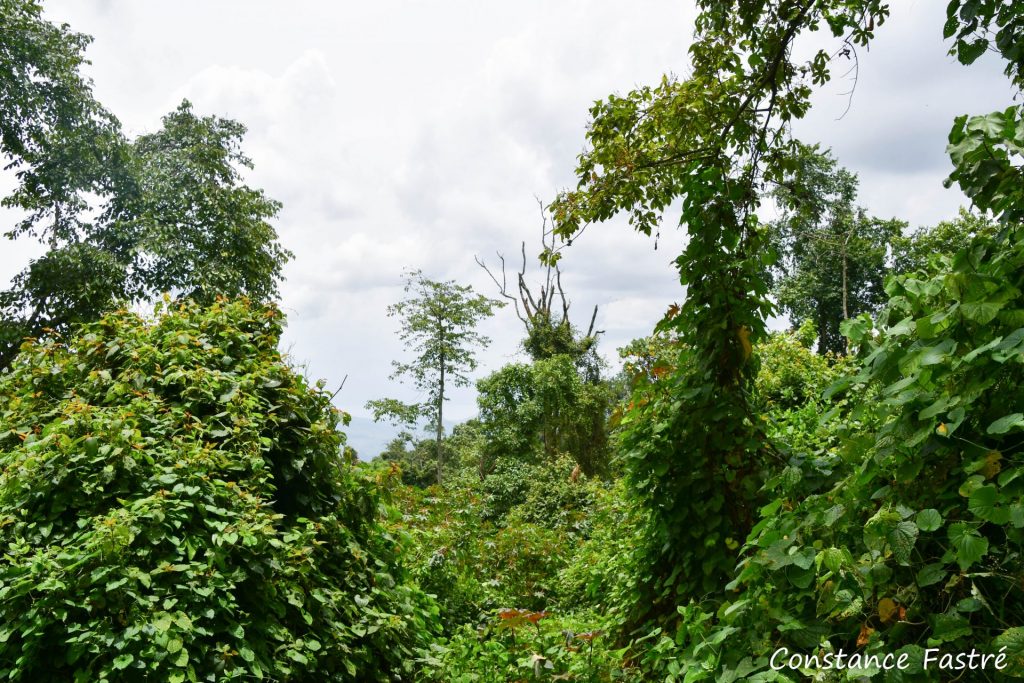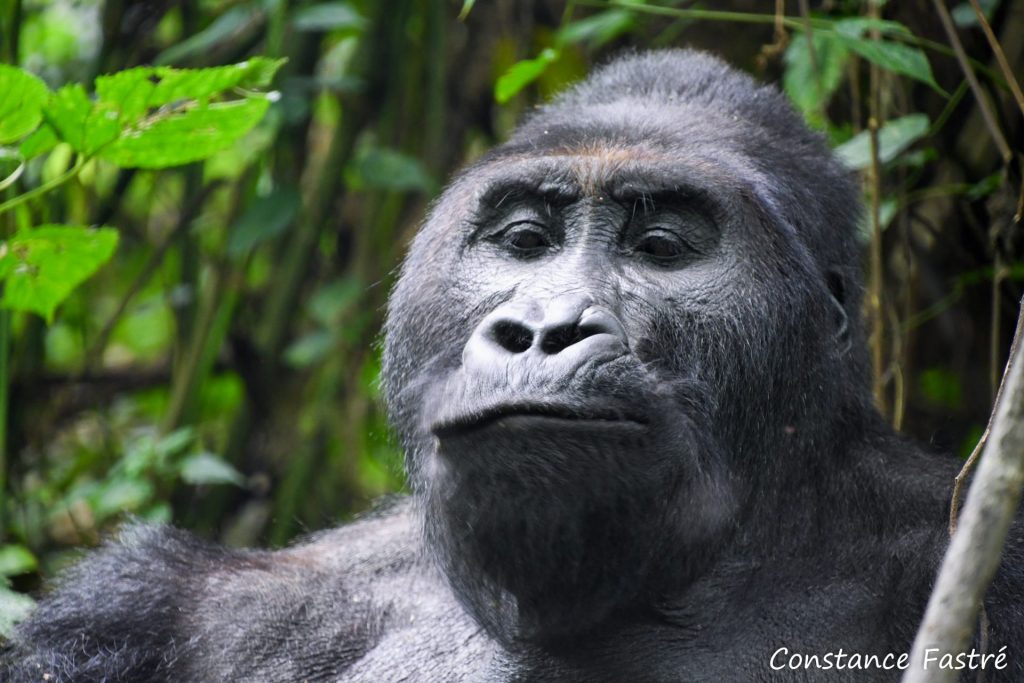We were going to see gorillas in the wild for the very first time. A once-in-a-lifetime experience, and one few people can boast about. For us, and some of the other seven people with us, this was even a childhood dream about to come true. I was so excited my hands were shaking a little. My legs were shaky too, but this could also be because we had walked up the mountain through the bushes for an hour. Then it happened. We had just been told to put our mouth-masks on when I spotted it, on my left: a big black lump sitting among the leaves.

The gorilla was huge. And so close. This was Bonane, the silverback of the family group we had come to visit. We had heard the females and youngsters of the group flee as we approached, but Bonane did not seem to care about us. Ignoring us, he stayed put in the bush, picking plants to eat. He did not even budge when the rangers hacked plants around him with their machetes so we could get a better look of him.
For a few minutes, everybody stared at the silverback, mesmerized. There is something so strange about watching an animal that is so humane. It feels almost rude to stare. Yet we could not stop looking at him and most of us started taking pictures. Whether sick of the attention, or eager to find better food, Bonane took off in the undergrowth. We followed him eagerly, but it was much harder for us to make progress in the forest. It is thanks to the rangers that we kept track of the silverback all the way to a tree he had climbed. He was now casually perched on top of the tree, eating leaves and fruits. We watched him as he pulled the branches to himself in a thundering noise of broken wood to reach the leaves. As if they were twigs.
We stayed a little more than an hour with Bonane. He spent most of his time sitting and eating, but I particularly enjoyed watching him climb down the tree he was perched on. We all held our breath when we saw how strong he was. And then, there were these moments when I caught his eyes. Of course, I wish we had seen the entire family group. But Bonane will forever be the first gorilla we have ever seen in the wild: unforgettable.
Why visit Kahuzi-Biega National Park
There are only a few places in the world where it is possible to see gorillas in their natural habitat. The most famous of these places are the Volcanoes National Park in Rwanda and Virunga National Park in DR Congo. There, you can see mountain gorillas (Gorilla beringei beringei), the fluffiest of the two Eastern Gorilla subspecies. Kahuzi-Biega National Park is lesser known but offers an interesting alternative experience. It is the best place to see Grauer’s gorillas (Gorilla beringei graueri), the other, and largest, of the Eastern gorilla subspecies. These gorillas only exist in Eastern Congo. One of the main advantages of visiting Kahuzi-Biega National Park is that it is much cheaper than in Rwanda or even Virunga.
Unfortunately, Kahuzi-Biega is less touristic than the Virunga and offers few facilities. While it is possible to rent a tent or cabin in the park, there is no restaurant or shop nearby. We found that the easiest option was to spend the night in Bukavu and leave early to visit the gorillas. Located an hour away from Kahuzi-Biega, right across the Rwandan border, Bukavu offers great views on Lake Kivu. Even better, the city offers fine dining options.
Habituated gorillas are not really wild
Frederik and I are not used to go and see habituated animals – we prefer looking for wild animals. Which often means getting but a glimpse of them. Unfortunately, it is almost impossible to see a non-habituated gorilla in the wild. As we had experienced a few weeks before in Nkuba, wild gorillas run away from people and hide in the forest. Gorillas trained to tolerate human presence, called habituated gorillas, are thus the only way to meet these gentle giants. But to be honest, we sometimes felt like we were bothering Bonane. We were so close! Some people in the group maybe got too close. We wished our group had been a bit smaller so everyone could observe Bonane from a comfortable distance. Yet, it was amazing to be able to watch Bonane’s facial expression. It was an incredible experience, and we hope we’ll get to do it again. With a bit of luck, Bonane will introduce us to his entire family next time!










Habituated gorillas are wild animals. They live and do as they please, they are just so used to people that they see you as they would a tree or forest creature. I have seen gorillas three times that were not habituated. Once in Lope National Park in Gabon, once on Lobeke National Park in Cameroon and once on a logging road in Cameroon near Libongo. On none of these occasions did the gorillas run away but were fairly relaxed allowing us to get good views of them and to watch them for a while. We also saw habituated gorillas in the CAR in Dzangha Ndoki National Park which afforded better views of the gorillas but wasnt that much different than watching the completely wild as you would put it gorillas. The benefit to habituating gorillas is it encourages their protection through guaranteed tourist revenue (tourists are much more willing to spend money on a guaranteed than chance experience). I would recommend you check out the mentioned national parks if you have the time and money for them.